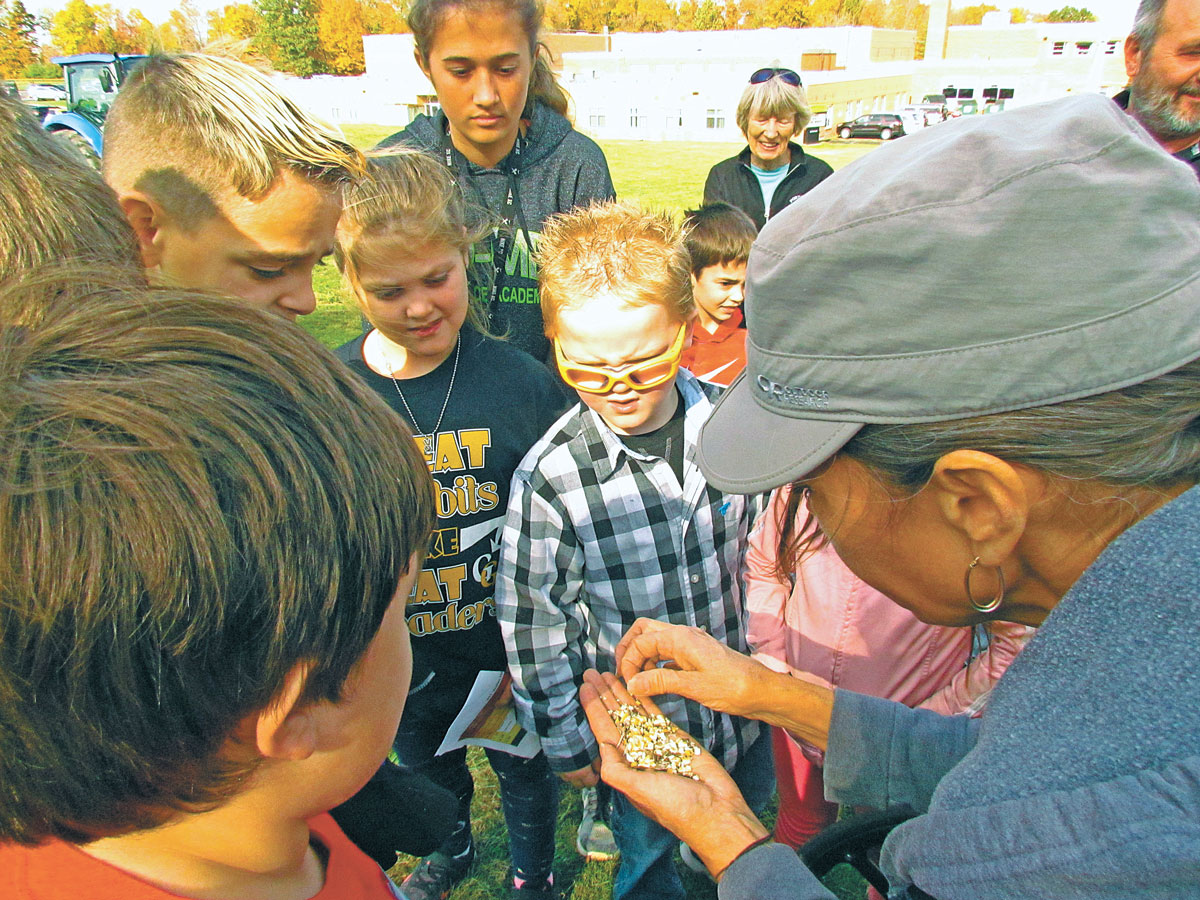Garrettsville – When Garfield students returned to school this fall, they noticed a large patch of grass on the hillside that borders State Route 88 had turned brown. Soon, the community learned that the site had been prepped to create a native plant-filled prairie — a green space to be used as a land lab for learning during the school day, with access for the community when school is out.
Last week, elementary students visited the site during their ‘Sharpen the Saw’ activities to learn about the prairie, see the no-till drill, and learn about the seeds that would be planted there. While outside, students helped drive stakes and string caution tape to keep football fans from parking on the open field while it germinates. After school, students from Southeast High School’s Future Farmers of America (FFA) and their instructor helped plant seeds with the no-till drill, which was on loan from the Portage Park District.
According to Lynn Vogel from Portage SWCD, “Establishing prairie plants takes time and patience.” She noted that most species, aside from a few forbs and grasses, will not be visible for up to two to three years after planting. But once the plants do bloom, they will display a wide range of color not only aesthetically pleasing to our eyes but also providing beneficial food and cover for birds, mammals and especially insects. In addition to providing outdoor classroom space, the site will reduce mowing for the District, saving time and money.
According to Vogel, the declining status of pollinators has gained worldwide awareness over the last several years. “Out of over 4,000 species of native bees in North America, only 400 – 700 have been recorded in Ohio.” She noted that in addition attracting native pollinators, the prairie will also attract other native insects, birds, and small mammals to the site. Most importantly, the site will provide outdoor learning space for countless students, as well.
According to Adam Wohlever, ODNR Preserves Naturalist, approximately 30 different grass and forb seed varieties were donated to the project by the Cleveland, Geauga, and Summit County Metroparks as well as the Hiram College Field Station. The Portage Park District loaned their no-till drill and helped the team calibrate it prior to planting. Last week, the group planted a variety of grasses, including Indian grass and switchgrass, as well as a variety of wildflowers, or forbs.

According to James Bierlair from Portage SWCD, the no-till drill equipment cuts a small trench, where the seed drill places seeds at the proper depth; then the soil is packed to hold the seeds in place. The seeds should germinate over winter. Proposed plans include a broadcast application of seed over light snow in early winter, and the planting of more mature plant plugs in the spring. Students will be encouraged to participate in or observe these activities. In addition, students will use the ‘land-lab’ to help develop critical thinking skills, appreciate the beauty of the natural world and achieve physical exercise along the trail,” explained Vogel. Future plans include seating space, interpretive signs, and ADA-compliant pathways to provide access for all.
Wohlever added, “This is almost entirely a volunteer-based project that has gained support from other local, state and national conservation agencies.” Vogel added, “Superintendent Ted Lysiak has been supportive of the program, as was the Tall Grass Prairie Center at Iowa State University who provided advice and guidance through countless phone calls. The Department of Natural Resources provided a $500 grant, which will be used for interpretive signage,” She continued, “Establishing a prairie is no small task, and assistance from others is essential for success.”
The prairie, in addition to the JAG campus woodland trail and rain garden are part of what helped the District be recognized as an Ohio Certified WILD School Site. Project WILD is supplementary program aligned with K-12 standards that emphasizes awareness, appreciation, and understanding of wildlife and natural resources.











